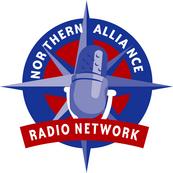
« Israel Prepares Ground Offensive Into Lebanon | Main | We Don't Need Help, But Where The Hell Is It? »
CQ's correspondent on the mobile laboratories, ChemicalConsultant, has sent a reply to the questions and the criticisms that he received on the earlier thread. That debate was one of the most intriguing we have had on CQ, and revealed a few of our regulars as having expertise in chemistry. i closed the earlier thread because it had dwindled down to a back-and-forth volley between two readers, but the debate remains as interesting as ever. ChemicalConsultant has a fairly technical argument, and it's above my pay grade, although my son would probably be able to make more sense of it. I'd love to get more of the scientific input that we saw in our earlier thread and put aside the more political aspects.
RESPONSE ON ALUMINUM –NaOH CHEMISTRY
In case the commenters on the Mobile Labs, etc, thread wondered what happened to ChemicalConsultant, well, I’m back. Part of my absence was due to having some paying chemical consulting to do. I also decided to dig deeper into the complex matter of aluminate chemistry.
(a)First let’s review dave’s and Simon666’s comments:
“As Simon pointed out, ChemicalConsultant is using a simplified formula for a complex reaction and drawing conclusions from it that have been proven to be wrong. Back when this type of reaction was first patented, the reaction was described in an equation similar to what ChemicalConsultant uses. See this patent description.
This patent is from 1909. Chemical knowledge has advanced since then. Take a look at this patent from 2003, which deals with the same process.
Starting with section [0053] the chemistry of the process is explained. As Simon said, the reaction is best represented by the following equations:
2Al + 3H2O > Al2O3 + 3H2 (1)
and
2Al + 6H2O > Al2(OH)3 + 3H2 (2)
These equations show that sodium hydroxide is not consumed in the reaction. Earlier patents by Belitskus (1970) and Stockburger (1992) also contain equations that show that sodium hydroxide is not consumed. SODIUM HYDROXIDE IS CATALYTIC. Starting in section [0060], several experiments are done to PROVE that sodium hydroxide is catalytic. “
(b) I agree that the reaction is complex. Here are the equations used by Stockburger and Belitkus according to paragraph 0057, p 3, of AA:
2 Na+ + 2 Al + 2 OH- + 6 H2O → 2 Na+ + 2 Al(OH)4- + 3 H2 (3)
and
2 Na+ + 2 Al(OH)4- → 2 Na+ + OH- + 2 Al(OH)3↓. (4)
Also, reaction 4 does not go to completion; only a portion of the aluminate disproportionates to alumina trihydrate (ATH). I learned about the non-completion of reaction 4 when my employer sent me to visit an alumina plant in Louisiana. The aluminum industry is 90% based on the Bayer process which involves reacting bauxite which contains the mineral gibbsite, a form of Al(OH)3, with NaOH at high temperatures and pressures. The reaction is the reverse of equation 4, forming a supersaturated solution of sodium aluminate. When this solution cools, it reverses the reaction to equation 4 but there’s still some aluminate left in solution, with an excess of NaOH. This solution is reacted again with bauxite and the process continues.
(c) I went to this reference; Kirk-Othmer (K-O), “Encyclopedia of Chemical Technology”, Volume 2, for information about the reaction of aluminum with alkali hydroxides. I read the sections titled “Aluminum and Aluminum Alloys”,“Aluminum Compounds“ “Activated Alumina” and “Alumina Hydrates”. All of these sections were written by scientists and/or engineers employed by the Aluminum Company of America, also known as Alcoa.
(i)In “Aluminum and Aluminum Alloys”, the authors write “ Because of its amphoteric nature, aluminum is attacked rapidly by solutions of alkali hydroxides evolving hydrogen and forming soluble aluminates. That’s equation 3. In “Aluminum Compounds”, the authors write, “cooling after digestion requires gibbsite ( a form of Al(OH)3 ) seeding to precipitate Al(OH)3.”They also write that this produces a “spent” solution which contains an excess of alkali relative to aluminate, but both are present in the solution.
(ii) Figure 1 in the “Activated Alumina” section of K-O, shows that Al2O3 only forms when aluminum hydrates are heated to over 500o C. The highest temperature experienced by a form of hydrated aluminum oxide in AA is 170 o C ( see paragraph 0116, page 8). Therefore equation 1 doesn’t happen. If equations 3 and 4 are combined, the simplified but incorrect formula is equation 2; the complex reaction begins with equation 3, followed by equation 4. When it comes to the chemistry of aluminum and its compounds, I believe scientists and engineers who have worked for the world’s largest aluminum producer, Alcoa, know more than dave, Simon and the Andersen brothers (AA). The Andersens are resourceful tinkerers but not chemists. Since my group actually found sodium aluminate in the alumina plant “spent” solutions, but the Andersen brothers didn’t analyze their solutions, who should I believe, them or my lying eyes.
I analyzed the AA patent and found its results are explained by equations 3 and 4. I also reexamined the alleged Iraqi Al Kindi process (DAK) reported by Duelfer’s Iraq Survey Group and found it is explained by these same equations. Since aluminate chemistry is truly complex because the active ingredient, hydroxyls (OH-) go in and out of solution, it took a five page analysis to describe the chemistry accurately. I have sent it to Cap’n Ed who may post it as a link for those interested in the chemical details. [I have it here -- CE.]
The bottom line is that at best DAK could make about 5 times more than the 75 g of hydrogen I initially claimed, in the 3 hours they claimed for the process. This is only half the amount needed to fill the 5 storage bottles. If their reaction temperature got up to about 100o F or 40o C, the reaction shuts down. They would certainly not be able to launch balloons at the one per hour rate reported by Peter Beaumont, Antony Barnett and Gaby Hinsliff, "Iraqi mobile labs nothing to do with germ warfare," The Observer, June15, 2003, quoting “an experienced observer, Martin Furmanski”. This reference came from Joby Warrick of WaPo.
I re-examined the alleged reactor and noted that lines from compressed air bottles lead into two small tanks that also are fed by water. The claim is that the compressed air was used to push water from the main tank through these bottles and into the reactor. Since the system has a metering pump to transfer water, it would serves no purpose to use air. On the other hand, it would possible to transfer volatile materials, collected elsewhere in these high pressure bottles, into these small tanks for reaction with water or another solvent, then into the main reactor. That capability would be more consistent with chemical weapons production rather than bioweapons. The reactor’s temperature probe is located at about 40 cm above the base, far from the alleged reaction mixture which fills the reactor les than 10 cm. The probe would be properly located for a reaction that uses most of the tank volume. As the bioweapons experts point out, the bottom drain valve is located 2 cm above the base, making complete cleanout of the unit very difficult. The reactor I used at my job which produced solids had its drain valve located directly on the bottom. The solids were washed out. The scoop is just a diversion to fool inspectors who are not familiar with the details of the alleged process. It worked! Finally, if gas were the only product being made it would make sense to have the outlet on the top of the reactor to remove it further from potential foaming, plus it would be protected by a removable screen to remove particulates. In any event, the foam would not more than a couple of times the height of the reaction mix so the unit could be made much smaller, making higher quality hydrogen.
In conclusion, the ISG bioweapons experts and associated CIA oversight personnel “connected the dots” in determining that the Al Kindi unit probably did not make BW but they seriously failed to provide competent intelligence when they swallowed the phony Al Kindi hydrogen generation story. As they say in football, “After further review…”, I conclude that the unit was used for making chemical weapons and the ISG was fooled.
Chemical Consultant
Trackback Pings
TrackBack URL for this entry is

captain*at*captainsquartersblog.com


My Other Blog!
E-Mail/Comment/Trackback Policy
Comment Moderation Policy - Please Read!
Skin The Site








Hugh Hewitt
Captain's Quarters
Fraters Libertas
Lileks
Power Line
SCSU Scholars
Shot In The Dark
Northern Alliance Radio Network
Northern Alliance Live Streaming!



Des Moines Register
International Herald Tribune
The Weekly Standard
Drudge Report
Reason
The New Republic
AP News (Yahoo! Headlines)
Washington Post
Guardian Unlimited (UK)
New York Times
Los Angeles Times
OpinionJournal
Pioneer Press
Minneapolis Star-Tribune
MS-NBC
Fox News
CNN

Design & Skinning by:
m2 web studios
blog advertising

- dave on Another National Health Care System Horror Story
- brooklyn on Hillary Not Hsu Happy
- rbj on Hillary Not Hsu Happy
- Robin S on Requiem For A Betrayed Hero
- Ken on Hillary Not Hsu Happy
- Robin S. on Requiem For A Betrayed Hero
- RBMN on Hillary Not Hsu Happy
- NoDonkey on Another National Health Care System Horror Story
- Robin Munn on Fred Thompson Interview Transcript
- filistro on When Exactly Did Art Die?










